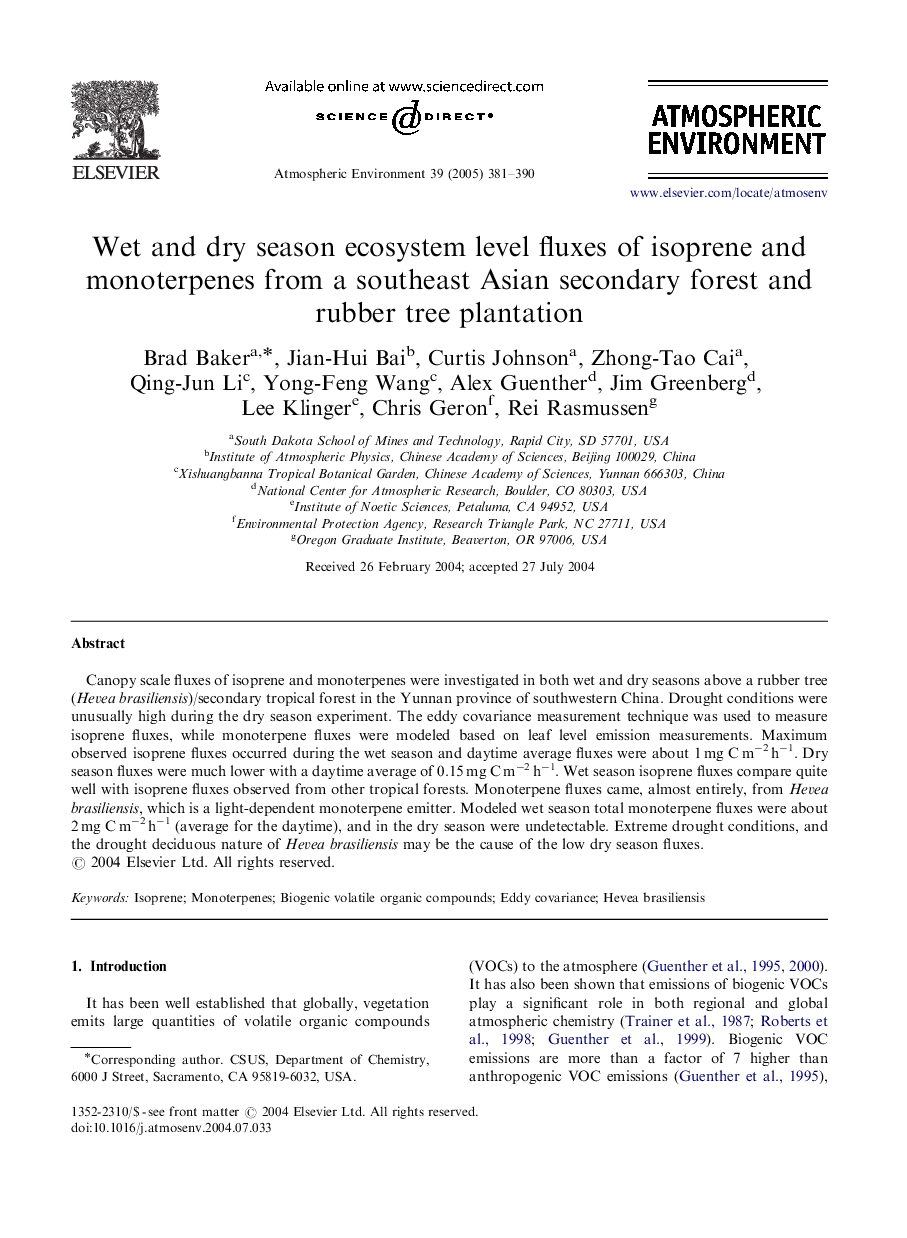| Article ID | Journal | Published Year | Pages | File Type |
|---|---|---|---|---|
| 9458872 | Atmospheric Environment | 2005 | 10 Pages |
Abstract
Canopy scale fluxes of isoprene and monoterpenes were investigated in both wet and dry seasons above a rubber tree (Hevea brasiliensis)/secondary tropical forest in the Yunnan province of southwestern China. Drought conditions were unusually high during the dry season experiment. The eddy covariance measurement technique was used to measure isoprene fluxes, while monoterpene fluxes were modeled based on leaf level emission measurements. Maximum observed isoprene fluxes occurred during the wet season and daytime average fluxes were about 1Â mg CÂ mâ2Â hâ1. Dry season fluxes were much lower with a daytime average of 0.15Â mg CÂ mâ2Â hâ1. Wet season isoprene fluxes compare quite well with isoprene fluxes observed from other tropical forests. Monoterpene fluxes came, almost entirely, from Hevea brasiliensis, which is a light-dependent monoterpene emitter. Modeled wet season total monoterpene fluxes were about 2Â mg CÂ mâ2Â hâ1 (average for the daytime), and in the dry season were undetectable. Extreme drought conditions, and the drought deciduous nature of Hevea brasiliensis may be the cause of the low dry season fluxes.
Related Topics
Physical Sciences and Engineering
Earth and Planetary Sciences
Atmospheric Science
Authors
Brad Baker, Jian-Hui Bai, Curtis Johnson, Zhong-Tao Cai, Qing-Jun Li, Yong-Feng Wang, Alex Guenther, Jim Greenberg, Lee Klinger, Chris Geron, Rei Rasmussen,
